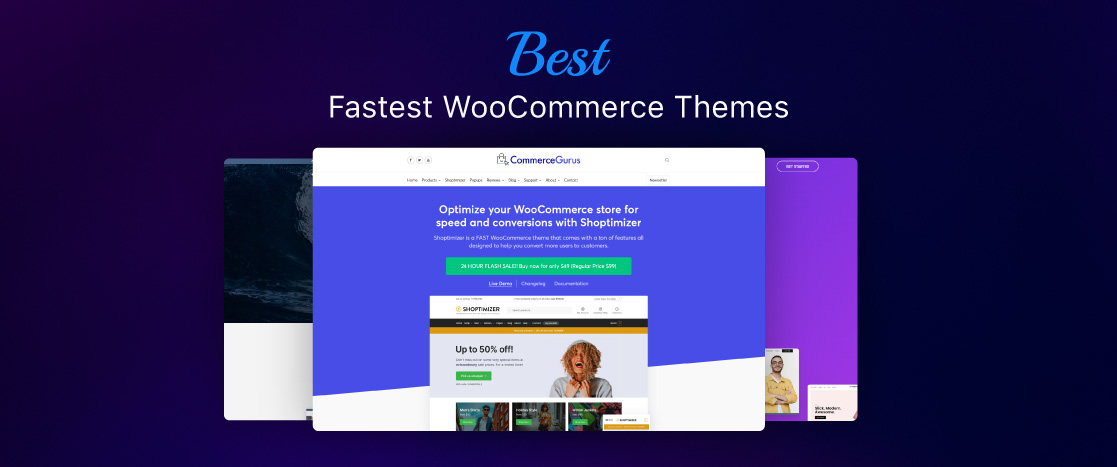
Ecommerce Advertising: Strategies for 2024
- Utilize Paid Advertising for Ecommerce Growth
- Leverage Social Media Ads for Targeted Audience Engagement
- Google Ads Strategy for Ecommerce Success
- Harness the Power of Video Advertising
- Explore Influencer Marketing as an Ecommerce Ad Strategy
- Use AI-Powered Ad Intelligence Tools
- Retargeting and Personalization: A Game Changer for Ecommerce Advertising
- Conclusion
In the ever-evolving world of online shopping, ecommerce businesses face fierce competition. With more companies moving online operations, reaching potential customers has become increasingly challenging. This is where ecommerce advertising steps in, helping businesses expand their reach, attract new customers, and increase conversions. In 2024, businesses must stay ahead of the game by utilizing effective advertising strategies to gain a competitive edge. Ecommerce advertising isn’t just about throwing money at paid ads—it’s about leveraging the right platforms, understanding your audience, and creating targeted campaigns that deliver results.
In this blog, we will dive into the seven best ecommerce advertising strategies for 2024, exploring how you can optimize paid advertising, utilize social media ads, develop a robust Google Ads strategy, and more to boost your online sales.
- Utilize Paid Advertising for Ecommerce Growth
- Leverage Social Media Ads for Targeted Audience Engagement
- Google Ads Strategy for Ecommerce Success
- Harness the Power of Video Advertising
- Explore Influencer Marketing as an Ecommerce Ad Strategy
- Use AI-Powered Ad Intelligence Tools
- Retargeting and Personalization: A Game Changer for Ecommerce Advertising
- Conclusion
Utilize Paid Advertising for Ecommerce Growth
Paid advertising has become one of the most powerful tools for driving e-commerce growth, allowing businesses to target specific audiences and generate traffic almost instantly. Paid ads, often in the form of pay-per-click (PPC), display ads, or social media ads, are essential to any e-commerce advertising strategy. In 2024, e-commerce businesses must refine their paid advertising approaches to achieve the highest return on investment (ROI).
Platforms such as Google Ads and Facebook Ads provide the flexibility to design ads for different segments of your audience, delivering personalized content that resonates with their needs. Paid advertising for e-commerce offers the advantage of immediate results, enabling businesses to track performance, optimize campaigns, and quickly adjust based on real-time data.
Best Platforms for Ecommerce Paid Advertising
Maximizing ecommerce advertising requires using the right platforms.
Google Ads is a reliable choice, enabling businesses to display search and display ads to users based on their search behavior, helping capture high-intent shoppers.
Social media platforms like Facebook, Instagram, and TikTok are equally crucial due to their advanced targeting features. These platforms allow businesses to reach specific audiences based on age, interests, location, and behaviors, resulting in highly targeted campaigns.
By leveraging these tools, ecommerce businesses can effectively connect with potential customers and boost conversion rates through personalized, relevant ads tailored to their audience’s needs and preferences, making these platforms indispensable for paid advertising success.
Budget Management in Paid Ecommerce Ads
Effective budget management is key to the success of paid e-commerce ads. Allocating your budget wisely ensures ads consistently reach your target audience without overspending. By analyzing data from past campaigns, you can identify which ads perform best and adjust spending accordingly. Regularly monitoring ad performance allows for timely adjustments, ensuring your campaigns remain optimized and cost-effective. This approach maximizes return on investment (ROI) while preventing unnecessary expenditures. Careful budget management not only improves ad efficiency but also helps sustain long-term growth in e-commerce advertising, ensuring you get the most value out of each campaign.
Leverage Social Media Ads for Targeted Audience Engagement
In 2024, social media continues to be one of the most influential tools for e-commerce advertising. With millions of active users on platforms such as Facebook, Instagram, TikTok, and Pinterest, e-commerce businesses have a golden opportunity to engage their target audience through ads. Social media platforms offer powerful targeting options, allowing businesses to reach customers based on detailed demographic data such as age, interests, location, and purchase behavior.
Creating highly targeted ads on social media ensures your message resonates with the right audience. It allows you to showcase your products in a visually appealing manner, engaging users as they scroll through their social feeds.
Creating High-Converting Social Media Ads
To create high-converting social media ads, prioritize visually compelling and engaging content. Ads featuring high-quality images, videos, and interactive elements generally perform better, capturing audience attention quickly. Storytelling is also crucial for building a connection with potential customers. By incorporating product demos, user-generated content, and behind-the-scenes looks at your brand, you can foster deeper engagement and trust. These strategies not only make your ads more relatable but also increase the likelihood of conversions. Focus on delivering clear, engaging messages that resonate with your audience to boost the effectiveness of your social media advertising efforts.
Google Ads Strategy for Ecommerce Success
One of the cornerstones of e-commerce advertising is a well-executed Google Ads strategy. Google Ads offers various advertising formats, including search ads, display ads, and shopping ads, that can significantly boost e-commerce visibility. By using a comprehensive e-commerce Google Ads strategy, businesses can target customers based on their search intent, making it easier to convert leads into paying customers.
Google search ads appear at the top of search engine results, making them ideal for capturing potential customers who are already looking for products similar to yours. Google Shopping ads, on the other hand, allow businesses to showcase their products directly in search results, complete with images, prices, and product details.
Optimizing Google Shopping Campaigns
Optimizing Google Shopping campaigns is essential for boosting e-commerce sales. Start by ensuring high-quality product images, clear descriptions, and accurate pricing to attract potential buyers. These elements help your products stand out and provide a better user experience. Regularly updating your product feed is equally important, as it ensures your ads reflect current inventory and pricing. Additionally, incorporating relevant keywords improves the visibility of your ads, making sure they reach the right audience. By fine-tuning these aspects, you can enhance the effectiveness of your Google Shopping campaigns, drive more traffic to your site, and ultimately increase conversions.
Remarketing Ads on Google
Remarketing ads on Google are a powerful strategy to re-engage visitors who have interacted with your site but haven’t completed a purchase. By displaying personalized ads that showcase products they previously viewed or similar items, you can encourage potential customers to return and finalize their purchase. This approach is particularly effective for e-commerce businesses facing high cart abandonment rates, as it reminds users of what they left behind and motivates them to complete the transaction.
Remarketing increases brand recall and boosts conversion rates by targeting an audience already familiar with your offerings, making it an essential tool for driving sales and maximizing ad spend efficiency.
Harness the Power of Video Advertising
Video advertising is quickly becoming one of the most powerful forms of e-commerce online advertising. In 2024, video content will continue to dominate consumer attention, making it crucial for e-commerce businesses to integrate video ads into their advertising strategies. Platforms like YouTube, Instagram Reels, and TikTok offer businesses the opportunity to reach a wide audience through engaging video content.
Video ads allow businesses to showcase products in action, provide how-to guides, or share user-generated testimonials, which help build trust and drive sales. Video content also tends to perform better in terms of engagement and retention, making it an essential tool for e-commerce advertisers.
Crafting Compelling Video Ads
Crafting compelling video ads begins with understanding your audience and addressing their needs. Short, attention-grabbing videos that deliver a clear, focused message tend to outperform longer, more drawn-out ads. To engage viewers effectively, use dynamic visuals, concise narratives, and strong calls to action that prompt immediate response. Ensuring the video is both visually appealing and aligned with the viewer’s interests will help capture attention quickly.
By focusing on delivering value in a concise format, your video ads can drive higher engagement, increase brand awareness, and motivate potential customers to take action, making them an essential component of your e-commerce advertising strategy.
Explore Influencer Marketing as an Ecommerce Ad Strategy
Influencer marketing has rapidly gained popularity as an effective e-commerce advertising strategy. In 2024, influencer marketing will continue to be a valuable tool for e-commerce businesses looking to expand their reach and credibility. Collaborating with influencers allows businesses to tap into established audiences that trust the opinions of these social media personalities.
Working with influencers in your niche can significantly boost brand awareness and drive traffic to your site. Influencers often provide authentic recommendations, helping to build trust and credibility with their followers, which can lead to increased sales.
Finding the Right Influencers
Finding the right influencers is crucial for a successful campaign. Choose influencers who align with your brand values and have an audience that fits your target demographic. Rather than just focusing on follower count, prioritize influencers with high engagement rates, as this indicates an active and loyal audience. Collaborating with the right influencers can help enhance brand credibility and reach. To ensure your campaigns are effective, track key metrics such as engagement, sales conversions, and overall brand visibility. By selecting influencers who resonate with your audience and closely monitoring results, you can maximize the impact of your influencer marketing efforts and drive meaningful outcomes for your e-commerce business.
Use AI-Powered Ad Intelligence Tools
As e-commerce advertising becomes more competitive, businesses are turning to AI-powered ad intelligence tools to stay ahead of the curve. AI tools analyze competitor ads, provide insights on ad performance, and offer suggestions for campaign optimization. These tools make it easier for businesses to make data-driven decisions and improve the effectiveness of their ad campaigns.
Using ad intelligence tools allows businesses to monitor trends, track competitors, and make adjustments to campaigns in real time, ensuring they stay relevant and competitive in the market.
Top AI-Powered Tools for Ecommerce Ad Intelligence
AI-powered tools are essential for optimizing e-commerce ads by providing valuable insights and data-driven strategies. Tools such as AdEspresso, SEMrush, and SpyFu help businesses analyze competitor strategies, track ad performance, and suggest keyword optimizations. These platforms enable brands to fine-tune their ads, ensuring they reach the right audience with the most relevant messaging.
By leveraging AI, these tools can automate and improve targeting, helping businesses maximize ad efficiency and increase ROI. Whether it’s refining keywords or monitoring the competition, using AI-powered tools ensures that e-commerce ads perform at their best, driving traffic and boosting conversions in a competitive online market.
Retargeting and Personalization: A Game Changer for Ecommerce Advertising
Retargeting and personalization have become game changers in the world of e-commerce advertising. Retargeting allows businesses to re-engage customers who have shown interest in their products but have not completed a purchase. By using customer data to create personalized ads, businesses can deliver highly relevant content to each individual, increasing the likelihood of conversion.
Dynamic Retargeting Ads
Dynamic retargeting ads elevate personalization by targeting users with specific products they have shown interest in during previous visits. Unlike standard retargeting, which may display generic ads, dynamic retargeting delivers ads featuring the exact products or categories a customer viewed. This tailored approach significantly boosts the chances of recapturing a user’s attention and driving conversions.
For e-commerce businesses, particularly those struggling with high cart abandonment rates, dynamic retargeting is a powerful tool. When a customer abandons their shopping cart or browse products without making a purchase, these ads act as a reminder of what they left behind, encouraging them to return and complete their transaction. By showing familiar products, dynamic retargeting creates a sense of urgency and relevance, making it easier to re-engage potential buyers.
Moreover, the ability to display personalized product recommendations can increase overall order value. For instance, if a customer viewed several items, the ad could suggest complementary products, leading to higher sales.
Conclusion
Ecommerce advertising is an ever-evolving landscape, and businesses need to stay ahead of trends to remain competitive. The seven strategies discussed—ranging from optimizing paid advertising to using video and influencer marketing—serve as a comprehensive guide for boosting your e-commerce sales in 2024.
Paid ads, particularly through platforms like Google and social media, offer precise targeting that helps reach the right audience, while dynamic retargeting and remarketing ads help re-engage potential buyers. Incorporating video content into your campaigns allows for higher engagement, and partnering with the right influencers can expand your brand’s reach authentically.
Additionally, utilizing AI-powered tools for ad intelligence can further optimize performance by analyzing competitor strategies and improving targeting. Consistently refining these approaches based on data and market trends ensures your ads remain effective and impactful.
By adopting and adapting these strategies, ecommerce businesses can not only drive traffic and increase conversions but also foster long-term growth. Staying proactive and continuously optimizing campaigns will help you maximize your advertising efforts, ensuring your brand thrives in the competitive ecommerce space.





